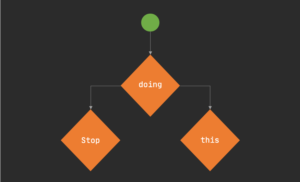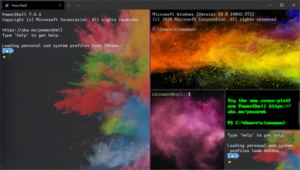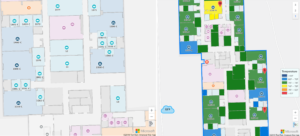Zure Digest is a collection of Azure and development related links, curated by the Azure Guild of the Zure. This Digest used to be internal only, but we decided that this could be useful for everyone and this is the first public issue! Links don’t represent the values of Zure or our coding practices. They are intended to be thought-provoking or otherwise worth sharing.
Blazor
- Blazor WebAssembly on Azure Static Web Apps (Scott Hanselman)
- Many apps today are just static files on the front end – HTML and JavaScript – with something powerful on the server-side. They aren’t “static apps” as they have very dynamic front end experiences, but they are static in that their HTML isn’t dynamically generated. As such, you don’t need to spend the money on an Azure Web App when an Azure Static Web App will do!
- How to deploy Blazor WASM & Azure Functions to Azure Static Web Apps (Niels Swimberghe)
- This walkthrough will show you how to deploy Blazor WASM to Azure Static Web Apps communicating with the built-in Azure Functions integration. Azure Static Web Apps (in preview) is a new free service that lets you host static sites deployed from GitHub.
C# & .NET
- A Deep Dive into How .NET Builds and Ships
- This is a deep technical dive into the machinery and processes used by the .NET Team to build and ship .NET. It will be of interest to those who wish to know about such topics as:
- How .NET builds a product developed across many repos.
- Safely handles security patches.
- Preps and validates a product for release.
- Stop Using If-Else Statements (Nicklas Millard)
- You’ll increase complexity with any new conditional requirement implemented using If-Else. Applying the state pattern, you simply alter an object’s behavior using specialized state objects instead of If-Else statements.

- Introducing C# 9: Native-sized integers (Anthony Giretti)
- C# 9 brings what mono has brought before: language support for native-sized signed and unsigned integer types with nint and nuint keyword. The motivation here is for interop scenarios and for low-level libraries, so might not use them often.
- C# 9.0: Top-level Statements. Or Should I Say: Hey, Where’s the Main Method? (Thomas Claudius Huber)
- C# 9.0 introduces many new language features, and with this blog post, I start a little series to look at some of those new features. Let’s start in this post with top-level statements.
- Game Development with .NET
- We’ve launched a new Game Development with .NET section on our site. It’s designed for current .NET developers to explore all the choices available to them when developing games. It’s also designed for new developers trying to learn how to use .NET by making games. We’ve also launched a new game development Learn portal for .NET filled with tutorials, videos, and documentation provided by Microsoft and others in the .NET game development community. Finally, we launched a step-by-step Unity get-started tutorial that will get you started with Unity and writing C# scripts for it in no time.

Data
- Eight ways to optimize costs on Azure SQL (John ‘JG’ Chirapurath)
- We introduced the Azure SQL family of database services to help businesses cost-effectively adapt and scale to rapidly changing conditions. Here are the top eight ways you can optimize your data spend, with savings available wherever you are in your digital transformation journey.
- Azure Cosmos DB serverless now in preview
- We are beyond excited to announce that Azure Cosmos DB serverless is now available in preview on the Core (SQL) API, with support for the APIs for MongoDB, Gremlin (graph), Table, and Cassandra coming soon. This new consumption-based model lets you use your containers cost-effectively, without having to provision any throughput.
DevOps
- Simplifying declarative deployments in Azure (Mark Russinovich)
- Over the last couple of months, we have renewed our focus in ARM template deployments with a focus on addressing some of the key challenges shared by our customers. Today, we’re sharing some of the investments we’ve made to address some of these challenges.
- Advancing Azure service quality with artificial intelligence: AIOps (Mark Russinovich)
- As Mark mentioned when he launched this Advancing Reliability blog series, building and operating a global cloud infrastructure at the scale of Azure is a complex task with hundreds of ever-evolving service components, spanning more than 160 data centers and across more than 60 regions. To rise to this challenge, we have created an AIOps team to collaborate broadly across Azure engineering teams and partnered with Microsoft Research to develop AI solutions to make cloud service management more efficient and more reliable than ever before.
Infrastructure
- Rules Engine for Azure Front Door and Azure CDN is now generally available (Megan Beatty)
- Today we are announcing the general availability of the Rules Engine feature on both Azure Front Door and Azure Content Delivery Network (CDN). Rules Engine places the specific routing needs of your customers at the forefront of Azure’s global application delivery services, giving you more control in how you define and enforce what content gets served from where.
IoT
- Microsoft unlocks the full potential of the smart building ecosystem
- Last year, we highlighted how Microsoft was accelerating smart building solutions with investments in cloud, AI, and IoT. Since then we have continued our momentum, maturing our Intelligent Cloud and Intelligent Edge capabilities and partner ecosystem to solve complex scenarios and integrate previously disparate silos. This year, we are excited to showcase how, together with some of the world’s largest real estate owners and managers, Microsoft is empowering industry-leading smart buildings developed upon a thriving ecosystem of solution developers, device manufacturers, systems integrators, and service providers.
Media Services
Tools
- Windows Terminal Tips and Tricks
- Windows Terminal comes with a lot of features that allow you to customize it and interact with it in a way that feels most comfortable to you. Let’s run through some tips and tricks that could help you set up your terminal in a way that’s perfect for you. At the time of this blog post, Windows Terminal is on version 1.3, and Windows Terminal Preview is on version 1.4.





